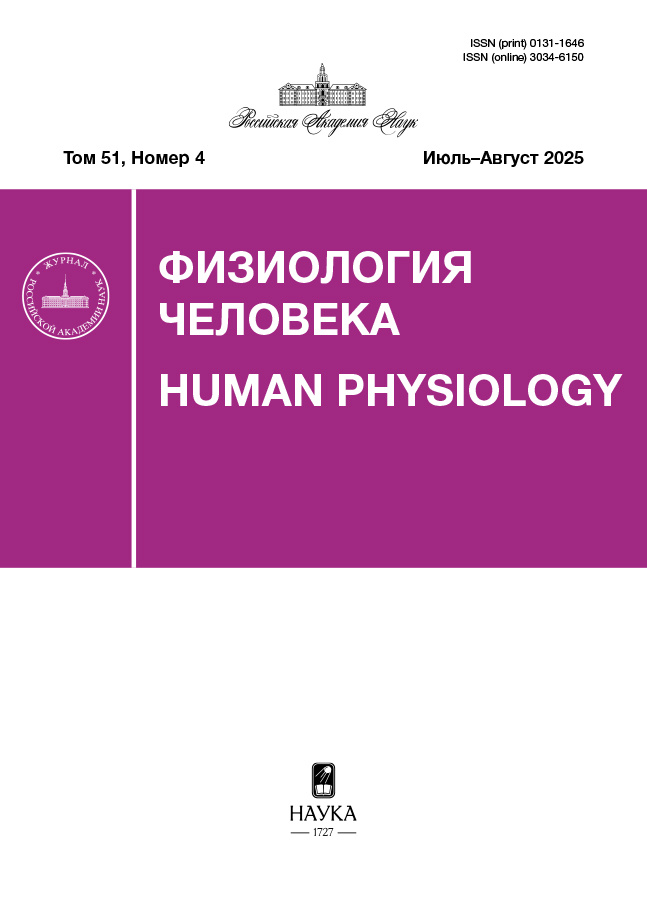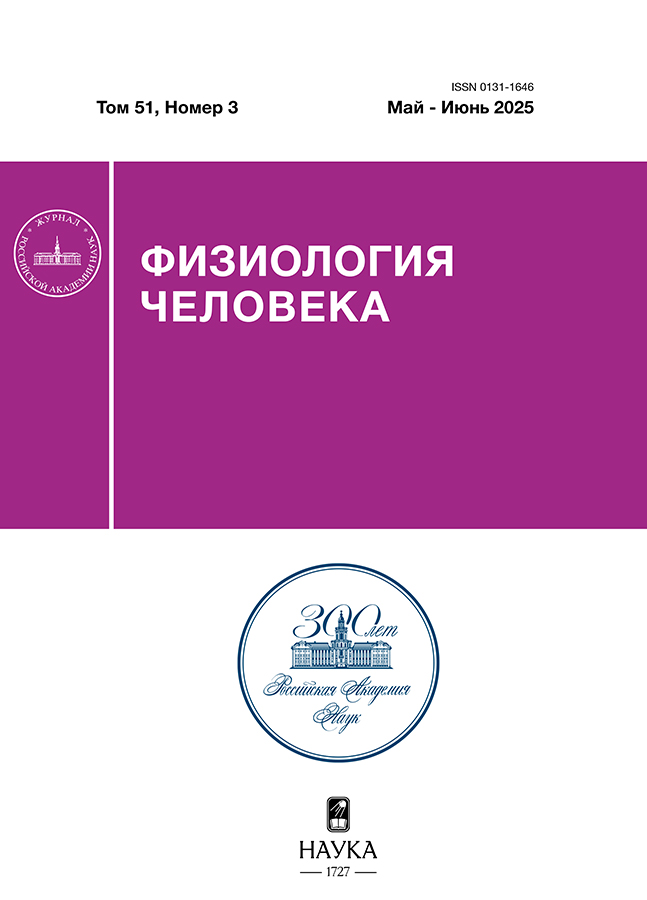Band-pass spectral-temporal parameters of forced expiratory noises in bronchial obstruction. relation with whistling sounds
- Authors: Pochekutova I.A.1, Safronova M.A.1
-
Affiliations:
- Il’ichev Pacific Oceanological Institute, Far Eastern Branch of RAS
- Issue: Vol 51, No 3 (2025)
- Pages: 76-89
- Section: Articles
- URL: https://rjmseer.com/0131-1646/article/view/684027
- DOI: https://doi.org/10.31857/S0131164625030081
- EDN: https://elibrary.ru/TQHLRE
- ID: 684027
Cite item
Abstract
A comparative study of band-pass spectral-temporal parameters of tracheal noises of forced expiratory (FE) and quantitative assessment of FE wheezes was conducted on an experimental sample including patients with bronchial obstruction (asthma and COPD, n = 36) and healthy asymptomatic individuals with normal lung function (n = 39). Digital processing of tracheal noise signals was performed in MATLAB automatically using a specially developed algorithm. The analyzed acoustic band-pass parameters are temporal and spectral characteristics in several (2 to 6) combined 200-Hz bands, divided into mid- (200–800 Hz) and high-frequency (800–2000 Hz) areas in the range of 200–2000 Hz, as well as their ratios. FE wheezes were recognized by an experienced operator on spectrograms in the SpectraPLUS audio editor. A significant predominance of the values of high-frequency band-pass energy parameters of tracheal noises and the ratio of energies and powers of the high-frequency and mid-frequency ranges was revealed in patients with obstructive pulmonary diseases compared to healthy controls. The number of whistling sounds was greater in patients and moderately correlated with the acoustic parameters. Redistribution of acoustic energy to the high-frequency region is probably associated with the pathophysiological basis of bronchial obstruction – narrowing of the conducting airways and an increase in airflow resistance.
Full Text
About the authors
I. A. Pochekutova
Il’ichev Pacific Oceanological Institute, Far Eastern Branch of RAS
Author for correspondence.
Email: i-poch@poi.dvo.ru
Department of Acoustic Tomography
Russian Federation, VladivostokM. A. Safronova
Il’ichev Pacific Oceanological Institute, Far Eastern Branch of RAS
Email: i-poch@poi.dvo.ru
Department of Acoustic Tomography
Russian Federation, VladivostokReferences
- Bousquet J., Khaltaev N. Global surveillance, prevention and control of Chronic Respiratory Diseases. A Comprehensive Approach. World Health Organization. Geneva, 2007. 146 p.
- Antonelli A., Pellegrino G., Papa G.F.S., Pellegrino R. Pitfalls in spirometry: Clinical relevance // World J. Respirol. 2014. V. 4. № 3. P. 19.
- Kim Y., Hyon Y.K., Lee S. et al. The coming era of a new auscultation system for analyzing respiratory sounds // BMC Pulm. Med. 2022. V. 22. № 1. P. 119.
- Pramono R.X.A., Bowyer S., Rodriguez-Villegas E. Automatic adventitious respiratory sound analysis: A systematic review // PLoS One. 2017. V. 12. № 5. P. 1.
- Ram A., Jindal G., Bagal U., Nagare G. Approaches for respiratory sound analysis in identification of respiratory diseases // Front. Biomed. Technol. 2024. V. 11. № 2. P. 286.
- Muthusamy P.D., Sundaraj K., Manap N.A. Computerized acoustical techniques for respiratory flow-sound analysis: a systematic review // Artif. Intell. Rev. 2020. V. 53. P. 3501.
- Rao A., Huynh E., Royston T. et al. Acoustic methods for pulmonary diagnosis // IEEE Rev. Biomed. Eng. 2019. V. 12. P. 221.
- Gavriely N., Cugell D.W. Breath sounds methodology. Boca Raton, FL: CRC Press, 1995. 203 p.
- Korenbaum V.I., Pochekutova I.A., Kostiv A.E. et al. Human forced expiratory noise. Origin, apparatus and possible diagnostic applications // J. Acoust. Soc. Am. 2020. V. 148. № 6. P. 3385.
- Forgacs P. The functional basis of pulmonary sounds // Chest. 1978. V. 73. № 3. P. 399.
- Brusasco V., Crapo R., Viegi G. ATS/ERS task force: Standartisation of lung function testing // Eur. Respir. J. 2005. V. 26. № 1–5. P. 319.
- Mussell M.J., Nakazono Y., Miyamoto Y. Effect of air flow and flow transducer on tracheal breath sounds // Med. Biol. Eng. Comput. 1990. V. 28. № 6. P. 550.
- Korenbaum V.I., Pochekutova I.A. [Acoustic-biomechanical relationships in the formation of forced expiratory noise in humans]. Vladivostok: Dalnauka, 2006. 148 p.
- Cegla U.H. Some aspects of pneumosonography // Prog. Resp. Res. 1979. V. 11. № 10. P. 235.
- Mead J., Turner J.M., Macklem P.T., Little J.B. Significance of the relationship between lung recoil and maximum expiratory flow // J. Appl. Physiol. 1967. V. 22. № 1. P. 95.
- Korenbaum V.I., Rasskazova M.A., Pochekutova I.A., Fershalov Y.Y. Mechanisms of sibilant noise formation observed during forced exhalation of a healthy person // Acoustical Physics. 2009. V. 55. № 4–5. P. 528.
- Olson D.E., Hammersley J.R. Mechanisms of lung sound generation // Semin. Respir. Crit. Care Med. 1985. V. 6. № 3. P. 171.
- Sohn K. Airflow velocities in the airways during expiration on different end-expiratory lung volumes: Computational study / Proceedings of the 28th IEEE EMBS Annual International Conference. New York City (USA), 2006. P. 5599.
- Fiz J.A., Jane R., Homs A. et al. Detection of wheezing during maximal forced exhalation in patients with obstructed airways // Chest. 2002. V. 122. № 1. P. 186.
- Fiz J.A., Jané R., Izquierdo J. et al. Analysis of forced wheezes in asthma patients // Respiration. 2006. V. 73. № 1. P. 55.
- Schreur H.J.W., Diamant Z., Vanderschoot J. et al. Lung sounds during allergen-induced asthmatic responses in patients with asthma // Am. J. Respir. Crit Care Med. 1996. V. 153. № 5. P. 1474.
- Pasterkamp H., Consunji-Araneta R., Oh Y., Holbrow J. Chest surface mapping of lung sounds during methacholine challenge // Pediatr. Pulmonol. 1997. V. 23. № 1. P. 21.
- Pochekutova I.A., Korenbaum V.I. Forced expiratory tracheal noise time in young men in health and in bronchial obstruction // Human Physiology. 2014. V. 40. № 2. P. 201.
- Serrurier A., Neuschaefer-Rube C., Röhrig R. Past and trends in cough sound acquisition, automatic detection and automatic classification: A comparative review // Sensors (Basel). 2022. V. 22. № 8. P. 2896.
- Hegde S., Sreeram S., Alter I.L. et al. Rameau Cough sounds in screening and diagnostics: a scoping review // Laryngoscope. 2024. V. 134. № 3. P. 1023.
- Knocikova J., Korpas J., Vrabec M., Javorka M. Wavelet analysis of voluntary cough sound in patients with respiratory diseases // J. Physiol. Pharmacol. 2008. V. 59 (Suppl 6). P. 331.
- Hardin J.C., Patterson J.L. Monitoring the state of the human airways by analysis of respiratory sound // Acta Astronaut. 1979. V. 6. № 9. P. 1137.
Supplementary files
















